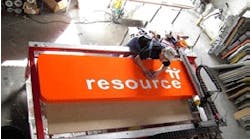An unemployment rate hovering around 10 percent and an economy that seems to be recovering at a rate too slow to generate sufficient job growth is a potent mix that is likely to stimulate new thinking about the importance of manufacturing. That is exactly what happened in December. The sluggish growth and mediocre economic news of recent months has stimulated the Obama administration to issue a new “manufacturing framework,” which attempts to outline how the administration plans to boost the current economic trajectory and get the country back to economic health.
The fact that the administration is seriously thinking about manufacturing is good news, and I think that we can attribute that interest both to the bad economic news and to the pressure of the Midwestern state Congressional delegations, and particularly Senator Sherrod Brown (D-OH), who has been a stalwart in calling for more attention to manufacturing. Whatever the motivation, the recently published Framework for Revitalizing American Manufacturing is a serious attempt to do something about the problems that manufacturing faces. Many of its suggestions, if acted upon promptly, would be a genuine benefit to the manufacturing sector.
The Obama December framework is too extensive to cover all of its recommendations, but here are some of better ideas that it puts forward: provide workers with the opportunity to obtain the skills necessary to be highly productive; invest in new technologies and business practices; develop stable and efficient capital markets for business investment; ensure foreign market access and a level playing field; improve the general business climate, especially for manufacturing.
If there is sufficient investment in job training and community colleges; if there is enough money put into both basic research and manufacturing-related R&D grants, including a number of R&D programs that already exist but are under-funded; if the financial system can be made healthy again and government programs such as the Small Business Administration and the Export-Import bank can be sufficiently staffed and funded; if there is a robust effort made to open foreign markets and punish or negotiate an end to unfair trade practices by our trade partners, including particularly the Chinese; and if the administration is willing to review its regulations and tax policies and, indeed, reform them in a way that would eliminate the 18-percent penalty that MAPI (the Manufacturers Alliance) estimates that U.S. businesses operate under when they attempt to compete in the international marketplace; then I would be optimistic that this latest attempt to adopt a pro-manufacturing strategy might just have a positive impact, resulting in the creation of new, high-paying jobs in competitive factories.
Previous administrations, including President George W. Bush in 2004, put out their own plans for strengthening manufacturing. But that is all they were – plans. There was little follow-through, and no new funding. Indeed, the Bush administration, after calling for a revitalization of our nation’s industrial capacity, actually cut effective manufacturing programs, such as the National Institute for Standards and Technology’s Manufacturing Extension Program and the Advanced Technology Program.
Of course there are many obstacles to revitalizing manufacturing. There is also pending legislation, such as Healthcare Reform and Cap and Trade, which are likely to raise costs for U.S. manufacturing. Nevertheless, if a robust effort is undertaken to promote the policies described in the Obama framework, the result could bear fruit and help to offset some of the new costs. What would be particularly helpful would be efforts to revitalize the credit system, which has forced many companies to close their doors even though they have orders on their books and business on the floor. Tax incentives for R&D and a faster system for getting government grants to innovative companies could make a difference between capturing new markets or losing out to subsidized foreign competitors. Finally, if the administration is as serious about revitalizing manufacturing as it claims, it has to convince Congress to keep taxes down and incentives to invest up.
You can help to revitalize U.S. manufacturing! Forward this column to your Congressman, local and state government leaders, or your local newspaper editor. Add your own comments on the importance of manufacturing innovation to the health of our economy. Your comments are also welcome at [email protected]
Dr. Paul Freedenberg is Vice President-Government Relations, AMT—The Association For Manufacturing Technology



